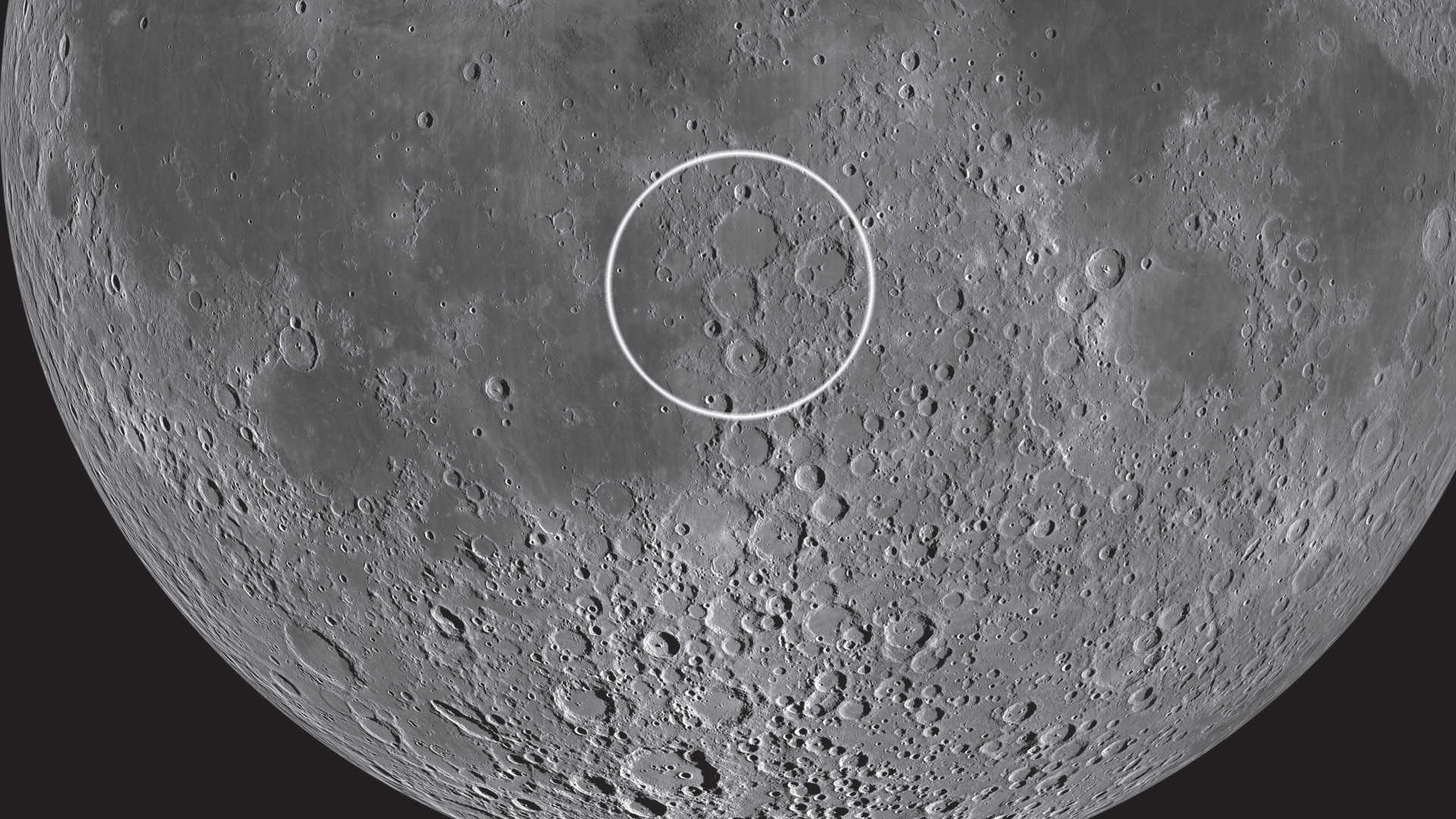An imposing trio
An imposing trio of craters stands at the terminator at Half Moon - the best time during the lunar orbit to observe them.
 The three craters are almost in the middle of the Moon. NASA/GSFC/Arizona State University
The three craters are almost in the middle of the Moon. NASA/GSFC/Arizona State UniversityAn imposing trio of craters - Ptolemaeus, Alphonsus und Arzachel - stands at the terminator at Half Moon, the best time during the lunar orbit to observe them. Here, the three large craters, located within a small area and in different stages of preservation, compete for our attention.
Degraded walled plains
The oldest formation of the trio, the 158 km wide Ptolemaeus, appears to be heavily eroded. The crater floor is covered with ejecta from the creation of the 1,300 km distant Imbrium impact, and its central peaks are no longer visible. Observed through a telescope with a small aperture when the Sun is high, the floor is largely flat. Only the small inner crater Ptolemaeus A (8 km), also known as Ammonius, interrupts the otherwise uniform appearance. Further smaller craters are visible in larger telescopes. It is also worth taking a look when the sunlight strikes the surface at a shallow angle. Then the entire crater floor can be seen to be covered by a multitude of degraded and only partly visible impacts craters.
Hard landing place
 Ptolemaeus, Alphonsus and Arzachel: here you will find many observation targets within a relatively small area. NASA/GSFC/Arizona State University
Ptolemaeus, Alphonsus and Arzachel: here you will find many observation targets within a relatively small area. NASA/GSFC/Arizona State UniversityThe smaller crater Alphonsus (110 km) is located close to Ptolemaeus, so that the walls of both craters touch one another. Here, Ptolemaeus’ wall appears slightly compressed, which indicates that Alphonsus is the younger of the two. Only a small central peak rises above the middle of the crater floor. The American lunar probe Ranger 9 made a planned impact just north-east of it, on 24 March 1965.
Three dark patches on the crater floor, which appear as as three relatively large and dark grey areas close to the walls, are very interesting. These pyroclastic deposits of volcanic ash are a visible testimony to volcanic activity at some point in the Moon's history.
Impact crater with rilles
With a diameter of 96 km, Arzachel is the smallest and youngest impact crater of the three. Its walls appear well preserved and it stands out clearly against its surroundings. The inner walls still show the well-preserved, terraced structure of a younger impact crater. The 1,500 m high central peak appears to be much more solid than that of Alphonsus. The inner crater Arzachel A (4 km) to the east of the crater centre is a suitable target for smaller telescopes. If the seeing is good you should also be able to see Rimae Arzachel (Arzachel rilles) with a medium-sized telescope.
Best visibility 8 or 21 days after New Moon
Author: Lampert Spix / Licence: Oculum-Verlag GmbH
